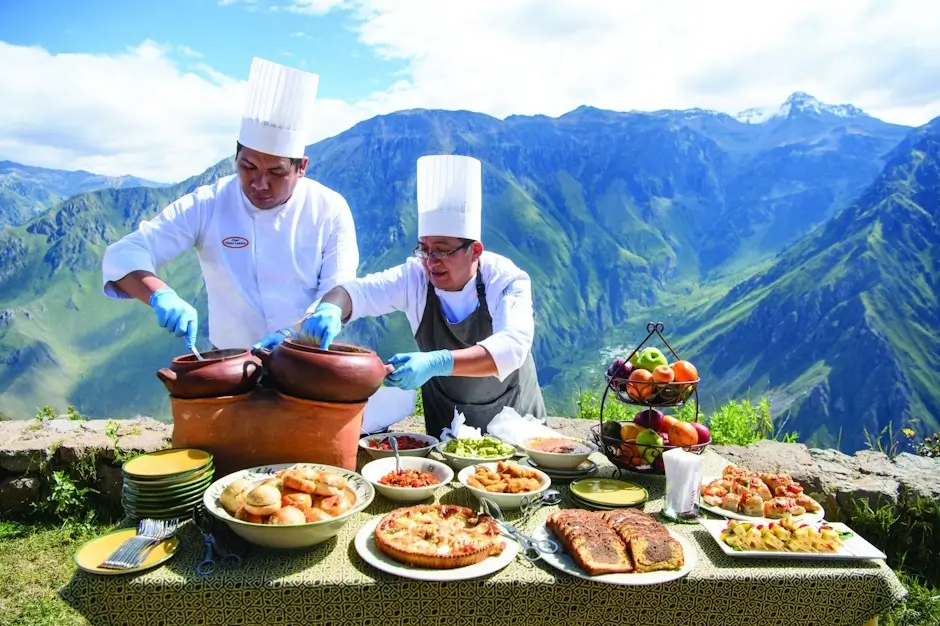How to Get to Peru: Your Complete Travel Guide
How to Get to Peru? : The easiest way to reach Peru is by air, with Lima’s Jorge Chávez International Airport (LIM) serving as the main gateway. There are direct flights from major cities in North America, Europe, and South America, operated by airlines such as LATAM, American Airlines, and Iberia.
Travelers already in South America can also enter Peru by land, crossing from Ecuador, Bolivia, Chile, or Brazil, while cruise ships occasionally arrive at ports like Callao near Lima.
Most visitors don’t need a visa for stays up to 90 days, but a passport valid for at least six months is required. Once in Peru, travelers can move around easily by domestic flights, tourist buses, or luxury trains connecting destinations like Cusco, Arequipa, and Puno.
No matter how you arrive, reaching Peru is the first step in discovering its rich culture, breathtaking landscapes, and ancient wonders like Machu Picchu.
- Embark on a Journey of Ancient Traditions: The Inti Raymi Tour in Cusco 4 Days
- Discover the Wonders of Peru with the Tour Perú Machu Picchu 5 Days
- Discover Peru with the City Tour Sacred Valley Machu Picchu 4 Days
- Explore the Wonders of Cusco with City Tour and Machu Picchu3 Days
Arriving by Air: The Easiest and Fastest Option
For most travelers, arriving in Peru by air is the most convenient and time-efficient way to begin an unforgettable adventure through this beautiful country. Whether you’re coming from North America, Europe, or another part of South America, flying to Lima’s Jorge Chávez International Airport (LIM) is the most common and practical route.
Located in the capital city, Lima, this modern airport serves as Peru’s main gateway and a strategic hub for connecting flights to every corner of the country.
Lima: The Main Gateway to Peru
Jorge Chávez International Airport, situated in the district of Callao just 11 kilometers from central Lima, handles the majority of international and domestic air traffic. It has been recognized as one of the best airports in South America for its efficiency and traveler services.
Upon arrival, visitors can easily access currency exchange offices, ATMs, hotel booking counters, tourist information desks, and safe taxi services directly inside the airport.
Direct International Flights to Peru
Lima offers direct flights from many of the world’s major cities, making it accessible and convenient for travelers from multiple regions.
From North America:
Peru is well connected with the United States and Canada. Airlines such as American Airlines, Delta, United Airlines, JetBlue, Air Canada, and LATAM Airlines operate frequent flights from:
- Miami
- Dallas
- Houston
- Los Angeles
- New York
- Atlanta
- Toronto
These flights typically take between 6 to 9 hours, depending on your departure city.
From Europe:
Travelers from Europe can reach Lima on nonstop flights operated by Iberia, Air Europa, KLM, Air France, and British Airways. The main departure cities include:
- Madrid
- Amsterdam
- Paris
- London
The flight duration from Europe ranges from 12 to 14 hours.
From South America:
Peru’s central location makes it a natural hub for regional flights. Daily connections from Chile, Argentina, Brazil, Ecuador, Colombia, and Bolivia are operated by airlines such as LATAM, Sky Airline, JetSMART, and Avianca. Most of these flights take 2 to 4 hours, making it easy to combine Peru with other South American destinations.
Domestic Connections: Reaching the Rest of Peru
Once you land in Lima, continuing your journey to other destinations is simple. The same airport offers numerous domestic connections to cities such as:
- Cusco (gateway to Machu Picchu)
- Arequipa (the White City)
- Puno (Lake Titicaca)
- Iquitos (the Amazon rainforest)
- Trujillo and Piura (northern beaches)
Domestic flights are frequent and generally last one to two hours, making air travel the most efficient way to move across Peru’s diverse geography.
Tips for a Smooth Arrival
- Book early: Flights to popular destinations like Cusco often sell out during peak seasons (June–August and December–January).
- Prepare for altitude: If traveling directly to Cusco, allow some time to rest and adjust after landing.
- Use official airport taxis or pre-arranged transfers: For safety and convenience when leaving the airport.
- Have local currency (Peruvian Soles): Exchange a small amount at the airport for immediate expenses.
A Gateway to Adventure
Arriving in Peru by air is more than just a mode of transportation — it’s the beginning of a journey into a land of ancient civilizations, majestic landscapes, and warm hospitality. From the moment you land in Lima, you’re just a short flight away from exploring the wonders of the Andes, the mysteries of the Amazon, and the timeless beauty of Machu Picchu.
For a stress-free arrival and seamless travel experience, Leading Peru Travel offers personalized airport transfers, domestic flight arrangements, and complete travel packages that connect you effortlessly with Peru’s most iconic destinations.
Entering Peru by Land: A Scenic and Adventurous Route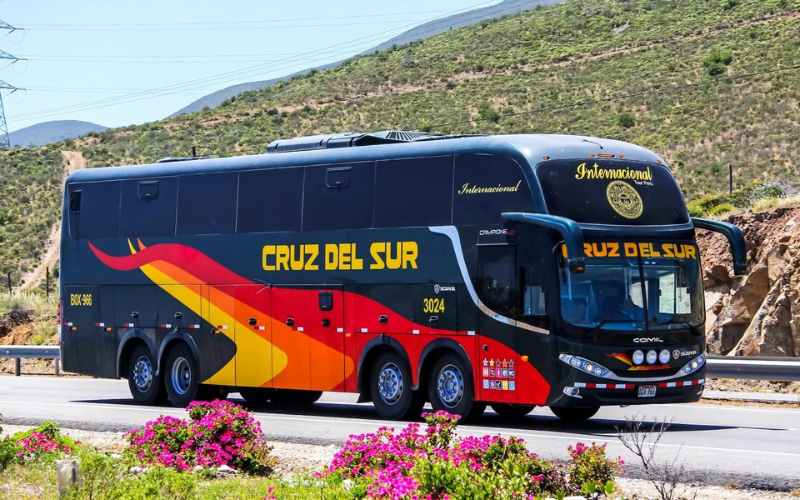
Traveling to Peru by land is not only an alternative to flying — it’s a scenic and adventurous journey through the heart of South America. From the deserts of Chile to the Andean highlands of Bolivia and the tropical borders of Brazil and Ecuador, entering Peru overland allows travelers to witness the continent’s diverse landscapes, cultures, and traditions before arriving in the Land of the Incas.
Whether you’re a backpacker exploring South America or an adventurous traveler seeking a unique route, here’s everything you need to know about how to enter Peru by land.
Why Choose to Enter Peru by Land?
Traveling overland to Peru offers an authentic and unforgettable experience. It’s ideal for those who enjoy:
- Slow travel and taking in scenic landscapes along the way.
- Cultural immersion, meeting locals, and exploring small border towns.
- Flexibility, with the ability to stop at natural attractions and hidden gems.
Although land travel takes longer than flying, it provides a deeper connection with the region’s geography and people — transforming the journey itself into part of the adventure.
Main Border Crossings into Peru
Peru shares borders with Ecuador, Colombia, Brazil, Bolivia, and Chile, offering several well-traveled routes for international visitors. Below are the most popular and practical entry points.
From Ecuador
Ecuador is one of the most common routes for travelers heading south into Peru.
- Huaquillas – Tumbes:
The busiest and most convenient crossing, located along the Pan-American Highway. From Tumbes, travelers can continue to Máncora, Piura, Trujillo, or Chiclayo. - Macará – Piura:
A smaller and quieter border, ideal for those seeking a peaceful journey through the northern Andean landscapes.
From Bolivia
Crossing from Bolivia is perfect for travelers exploring Lake Titicaca or heading toward the southern Andes.
- Copacabana – Kasani (Lake Titicaca):
This scenic route connects the Bolivian town of Copacabana with Puno, offering breathtaking views of the lake. - Desaguadero:
A busier border used by travelers coming directly from La Paz to Puno.
From Chile
Chile offers one of the most efficient and modern overland routes to Peru.
-
Arica – Tacna:
The main crossing between northern Chile and southern Peru. Regular buses and shared taxis connect Arica and Tacna, where you can catch trains or buses to Arequipa or Lima.
From Brazil
This remote crossing is ideal for explorers traveling through the Amazon region.
-
Assis Brasil – Iñapari:
Located in the southeast, this route connects Acre (Brazil) with Madre de Dios (Peru) via the Interoceanic Highway, leading toward Puerto Maldonado and the Tambopata Rainforest.
How to Travel: Bus or Private Vehicle
Peru has one of the best long-distance bus networks in South America. Travelers can find comfortable, reliable, and safe service across international and domestic routes.
Recommended bus companies include:
- Cruz del Sur – Premium service with comfortable reclining seats and meals.
- Oltursa – Excellent national coverage and modern vehicles.
- Excluciva – Luxury buses with first-class amenities.
Buses often run daily between border towns and major cities such as Lima, Cusco, Arequipa, and Puno.
If you prefer privacy and flexibility, private transfers or rental cars are also available — especially when traveling from Arica (Chile) or Copacabana (Bolivia). Agencies like Leading Peru Travel can arrange safe and comfortable ground transportation across borders.
Entry Requirements and Documentation
Entering Peru by land is straightforward, but travelers should prepare the necessary documents:
- A valid passport (with at least six months of validity).
- Most nationalities do not require a visa for stays up to 90 days.
- You will receive an entry stamp or digital record from Peruvian immigration (Migraciones).
It’s advisable to keep your entry record (TAM or digital receipt), as it may be required when exiting the country or checking in for flights.
Tips for a Smooth Land Entry
- Travel during daylight hours for safety and better visibility.
- Exchange some Peruvian Soles before crossing, as ATMs may not always be available near borders.
- Use official transportation and avoid unofficial taxis or informal crossings.
- Keep copies of your passport and immigration documents.
-
Stay aware of altitude changes if you’re traveling from Bolivia to Puno or Cusco — take time to acclimatize.
The Journey Is Part of the Adventure
Entering Peru by land is not just about crossing a border — it’s about embracing the journey. Every route offers its own story: the desert roads of Tacna, the Andean views of Lake Titicaca, or the lush Amazon landscapes near Iñapari.
This overland experience lets you see how Peru’s culture, music, and flavors begin to blend even before you officially arrive. It’s a route that rewards patience with authenticity and unforgettable moments.
How to Get to Peru: Arriving by Sea – Cruises to Peru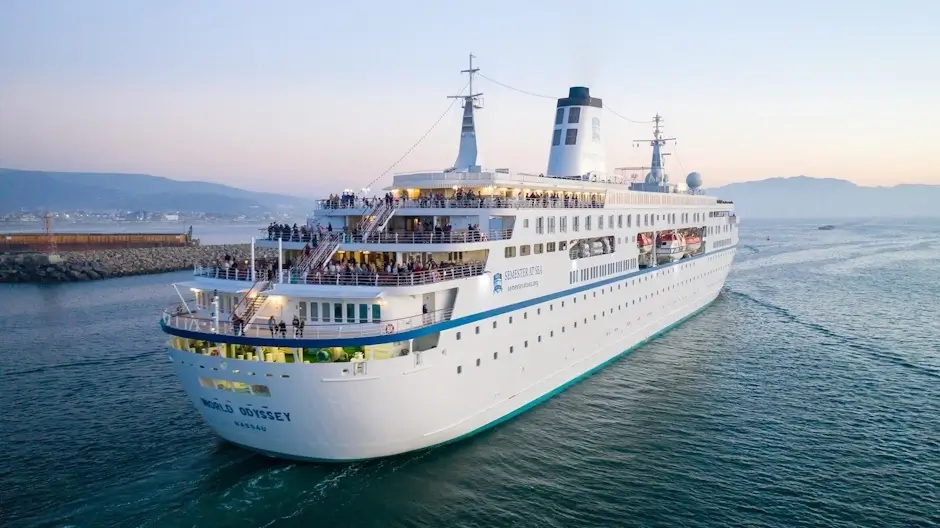
While most travelers reach Peru by air or land, arriving by sea offers a truly unique and luxurious way to discover the country. With its stunning Pacific coastline, vibrant port cities, and fascinating cultural attractions nearby, Peru is becoming an increasingly popular destination for cruise travelers exploring South America.
Whether you’re arriving on a large ocean liner or a smaller expedition vessel, docking in Peru allows you to experience a mix of history, culture, and natural beauty — all before you even step inland.
Peru’s Strategic Location on the Pacific Coast
Peru lies along the western coast of South America, bordered by the Pacific Ocean to the west. Its location makes it an ideal stop for cruise routes traveling between Chile, Ecuador, and Panama, as well as longer itineraries that include the Galápagos Islands, the Chilean fjords, and the Panama Canal.
The Peruvian coastline extends for nearly 2,400 kilometers (1,500 miles), offering a wide variety of landscapes — from arid deserts and golden beaches to lush coastal valleys and ancient archaeological sites.
Main Ports of Call in Peru
Peru has several ports that receive international cruise ships and expedition vessels. Each one offers a different perspective on the country’s history, culture, and natural attractions.
Callao (Lima) – The Main Cruise Port
The Port of Callao, located just 15 kilometers (9 miles) from Lima’s city center, is the country’s primary maritime gateway and the busiest port on the west coast of South America.
Most international cruises stop here, giving travelers easy access to:
- Lima’s historic center (a UNESCO World Heritage Site)
- Barranco, Lima’s bohemian district known for art, music, and nightlife
- Gastronomic tours, showcasing Peru’s award-winning cuisine
From Callao, travelers can also take excursions to Pachacamac, an ancient pre-Inca temple complex, or fly to Cusco and Machu Picchu for a once-in-a-lifetime experience.
Matarani (Arequipa) – Gateway to the Andes
Located in southern Peru, Matarani Port serves as the maritime entry point to Arequipa, the country’s second-largest city.
Visitors arriving here can enjoy:
- The “White City” of Arequipa, built from volcanic stone
- Excursions to the Colca Canyon, one of the world’s deepest canyons and home of the Andean condor
- The stunning landscapes of the Andes Mountains
Matarani is a favorite for smaller cruise ships and adventure vessels exploring the southern Pacific coast.
Salaverry (Trujillo) – The Northern Heritage Route
The Port of Salaverry, located near Trujillo, gives travelers access to some of Peru’s most important archaeological treasures, including:
- Chan Chan, the world’s largest adobe city and a UNESCO World Heritage Site
- The Temples of the Sun and Moon (Huacas del Sol y la Luna), remnants of the Moche civilization
- The colonial charm of Trujillo’s historic center, known for its colorful mansions and lively plazas
This northern route is ideal for travelers interested in Peru’s pre-Inca history and colonial heritage.
Types of Cruises to Peru
Travelers can choose from a variety of cruise options that include Peru in their itineraries:
- Luxury Ocean Cruises: Operated by lines such as Princess Cruises, Holland America, Celebrity Cruises, and Oceania Cruises, these voyages typically travel between Chile and Panama, stopping in Callao and Matarani.
- Expedition Cruises: Smaller vessels operated by companies like Silversea Expeditions and Hurtigruten explore remote coastal regions and natural reserves, focusing on wildlife and culture.
- Regional Cruises: Some shorter routes explore the Pacific coast of South America, combining Peru with Ecuador, Colombia, and Chile.
No matter the cruise type, travelers can enjoy breathtaking coastal views, onboard comfort, and enriching cultural experiences ashore.
Shore Excursions and Experiences
Arriving by sea doesn’t mean you’ll miss out on Peru’s inland treasures — in fact, cruise itineraries often include or offer optional excursions to major highlights such as:
- Lima City Tours, including Miraflores, Barranco, and San Francisco Monastery
- Culinary experiences in top Peruvian restaurants
- Fly-over tours of the Nazca Lines from Pisco or Ica
- Excursions to Cusco and Machu Picchu (via domestic flights)
- Visits to Arequipa and Colca Canyon from Matarani
- Archaeological tours of Chan Chan and the Moche Temples from Salaverry
These excursions allow travelers to experience the diversity of Peru’s landscapes — from the coast to the Andes — even on short visits.
Entry Requirements for Cruise Passengers
Peru offers simple entry procedures for cruise visitors. Most travelers can enter visa-free for stays up to 90 days. Immigration is handled directly at the port, and cruise passengers receive an entry stamp in their passport or an electronic record.
Make sure your passport is valid for at least six months beyond your arrival date.
Why Choose a Cruise to Peru?
Arriving by sea is a luxurious and memorable way to experience Peru’s beauty. It combines comfort, scenic travel, and cultural immersion in one journey. Cruise travelers enjoy:
- Hassle-free logistics
- Access to multiple destinations along the coast
- A chance to explore iconic sites with professional guides
- A relaxed and comfortable way to see Peru’s highlights
For travelers who love slow, scenic journeys, a cruise to Peru is the perfect blend of adventure and elegance.
Visa and Entry Requirements: How to Get to Peru?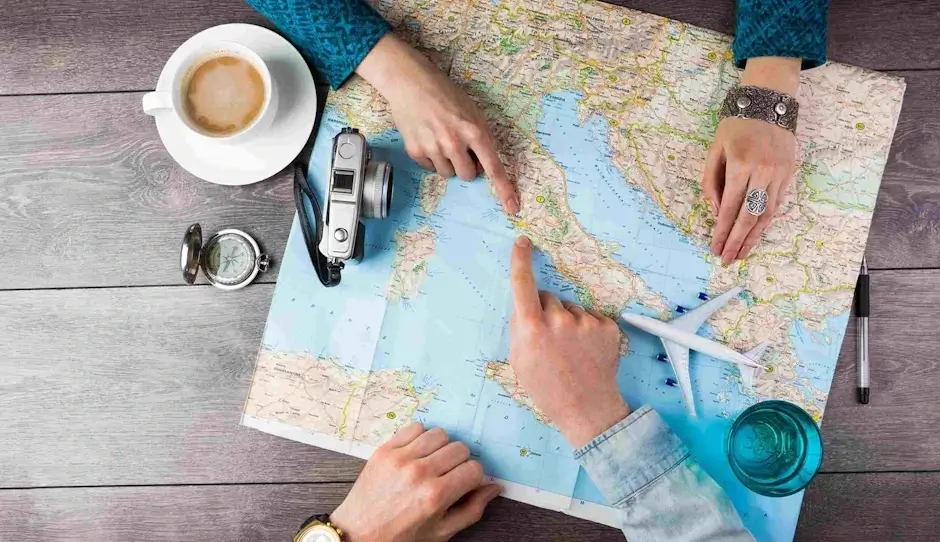
Before planning your dream trip to Machu Picchu, the Sacred Valley, or the Amazon Rainforest, it’s important to understand Peru’s visa and entry requirements. Fortunately, Peru is one of the most traveler-friendly countries in South America, offering easy entry for visitors from many parts of the world.
Visa-Free Entry for Most Travelers
Citizens of most countries in North America, South America, and Europe can enter Peru without a visa for tourism purposes. This includes travelers from the United States, Canada, the United Kingdom, the European Union, Australia, and New Zealand.
Typically, tourists are allowed to stay in Peru for up to 90 days per visit, although immigration officers may grant shorter or longer stays depending on your itinerary.
For travelers from countries that do require a visa, applications should be made in advance at a Peruvian consulate or embassy, where documents such as proof of accommodation, return tickets, and sufficient funds are usually required.
Passport Requirements
To enter Peru, your passport must be valid for at least six months beyond your planned date of arrival. This rule applies to all travelers, regardless of nationality. It’s also a good idea to have a few blank pages in your passport for entry and exit stamps.
Arrival Card and Immigration Process
When you arrive in Peru—whether by air, land, or sea—you’ll go through immigration control. Travelers must present their passport and sometimes fill out a digital arrival card (depending on your mode of entry).
Upon approval, immigration officers will stamp your passport with the length of stay permitted. Always check this stamp carefully to confirm your authorized days in the country.
Vaccinations and Health Requirements
While there are no mandatory vaccines for entry into Peru, certain vaccinations are recommended, especially if you plan to visit the Amazon region. These include yellow fever, hepatitis A, and typhoid. Some countries may also ask for proof of yellow fever vaccination upon returning home if you have visited certain areas of Peru.
Extending Your Stay
If you wish to stay longer than your initial entry period, you can request an extension online through Peru’s immigration website (Migraciones). However, overstaying your visa without authorization may result in fines upon departure.
Entry with Minors
If you’re traveling with children, Peru requires a valid passport for each minor. If only one parent or guardian is traveling, you may need a notarized authorization letter from the other parent, especially when exiting the country.
Final Travel Tips
- Keep a copy of your passport and entry stamp with you at all times.
- Verify if your country requires a visa before traveling.
- Always respect your allowed stay duration to avoid fines or complications.
- Check for updated requirements before your trip, as immigration rules can change
Reaching Peru is easier than ever — whether you fly directly to Lima, cross its scenic borders, or arrive by cruise ship, each route offers a different adventure. Once you set foot in this magical land, you’ll discover that getting here was just the first step in a journey filled with history, color, and unforgettable experiences.
Plan your trip with Leading Peru Travel and let us take care of every detail, so you can focus on what truly matters — exploring the heart of the Andes and the mysteries of the Inca Empire.
10 Frequently Asked Questions: How to Get to Peru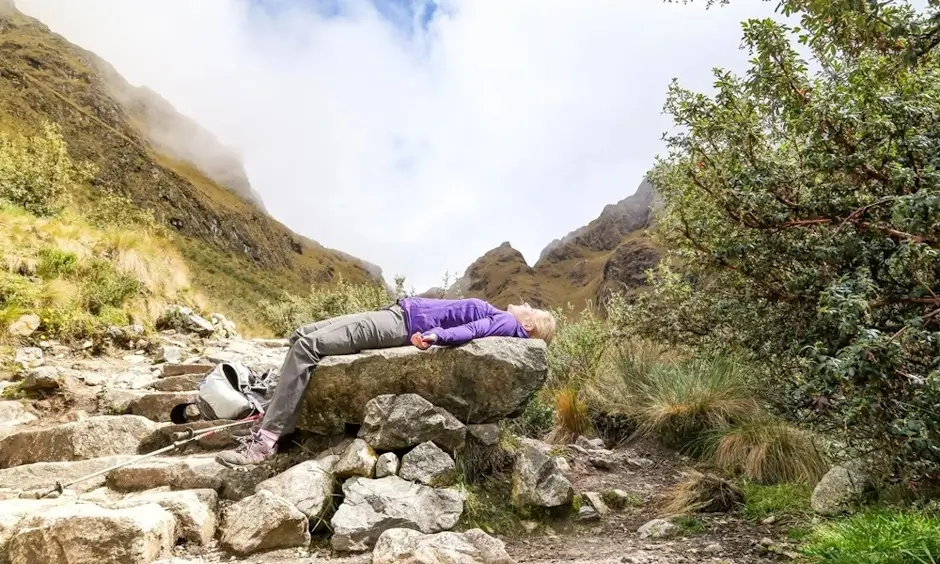
-
What is the main international airport in Peru?
The main international airport is Jorge Chávez International Airport (LIM), located in Lima, the capital city. It is the primary gateway for most international and domestic flights.
-
Which airlines fly to Peru?
Major international airlines such as LATAM Airlines, American Airlines, Delta, United, Iberia, Air France, and Avianca offer regular flights to Lima from North America, Europe, and South America.
-
Do I need a visa to enter Peru?
Visa requirements depend on your nationality. Citizens of most American and European countries can enter Peru without a visa for tourism for up to 183 days. Always check the latest entry requirements before traveling.
-
Can I enter Peru by land?
Yes. You can cross into Peru by land from Ecuador, Colombia, Brazil, Bolivia, or Chile. The most popular crossings are between La Paz (Bolivia) and Puno, and Arica (Chile) and Tacna.
-
Are there cruises that stop in Peru?
Yes. Many South American cruise itineraries include Callao (Lima) as a port of call, and some luxury cruises stop in Matarani (Arequipa) or Salaverry (Trujillo).
-
What documents do I need to enter Peru?
You will need a valid passport (with at least six months of validity). Depending on your nationality, you may also need a tourist visa or return ticket to show at immigration.
-
Can I travel to Peru by bus from neighboring countries?
Yes. Long-distance buses connect major cities such as Quito (Ecuador), La Paz (Bolivia), Santiago (Chile), and Buenos Aires (Argentina) with Lima and other Peruvian destinations.
-
What is the best time to fly to Peru?
The best time depends on your travel plans. Generally, May to September is ideal for visiting the Andes and Cusco region, while December to March is great for the coast and beaches.
-
Are domestic flights available from Lima to other destinations?
Yes. There are frequent domestic flights from Lima to major cities such as Cusco, Arequipa, Iquitos, Trujillo, and Puno, making travel across the country fast and convenient.
-
How far in advance should I book my flight to Peru?
It is recommended to book at least two to three months in advance, especially if you plan to visit during the high season (June to August) or during major festivals.
- Eplore Peru: From Vibrant Lima to Mystical Machu Picchu and Majestic Lake Titicaca 8 Days
- Perú Travel with Tour Lima Cusco Machu Picchu Lake Titicaca 7 Days
- Explore the Wonders of Cusco with City Tour and Machu Picchu 3 Days
- Explore Peru with the Lima Cusco Machu Picchu Huayna Picchu Tour 6 Days
For more information and to book your trip, contact us on WhatsApp. Follow us on Instagram for the latest updates and travel inspiration.
CONTACT US:
We are a Travel Agency specialized in tourist packages, if you need any information, do not hesitate to write to us.
We offer tours in Peru and Bolivia.






